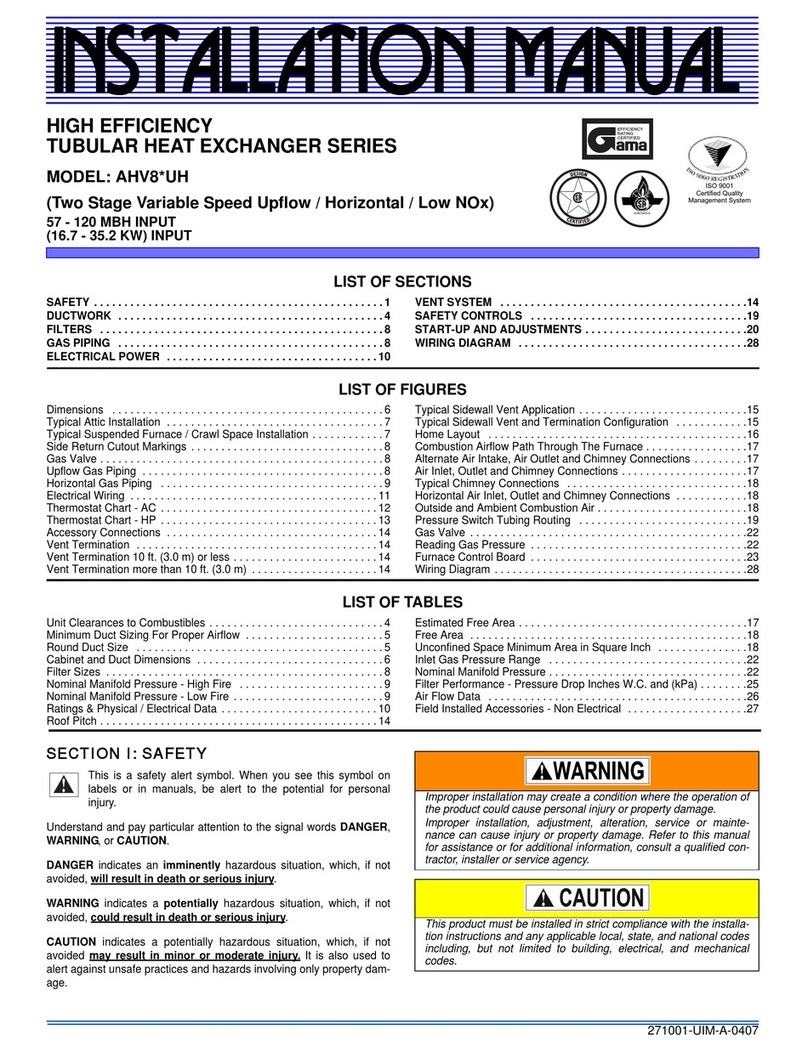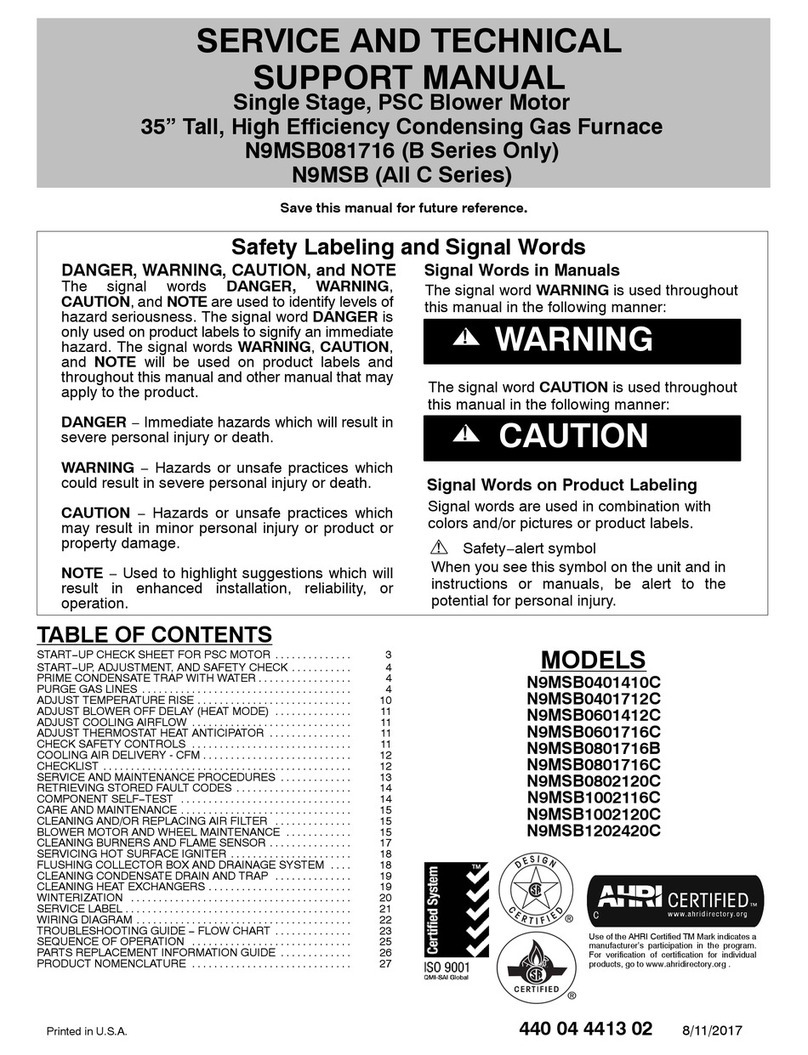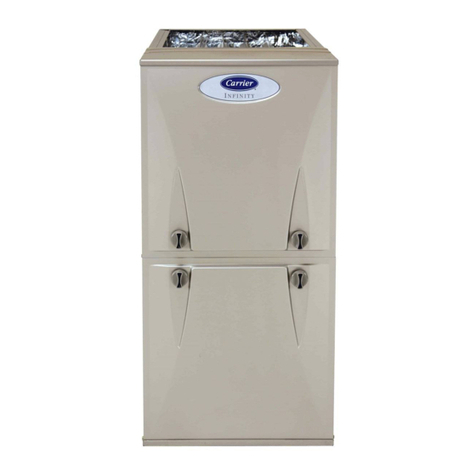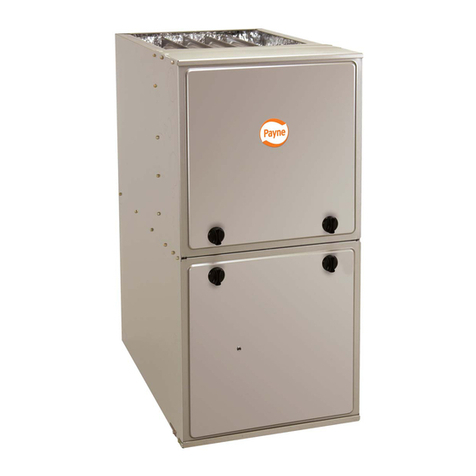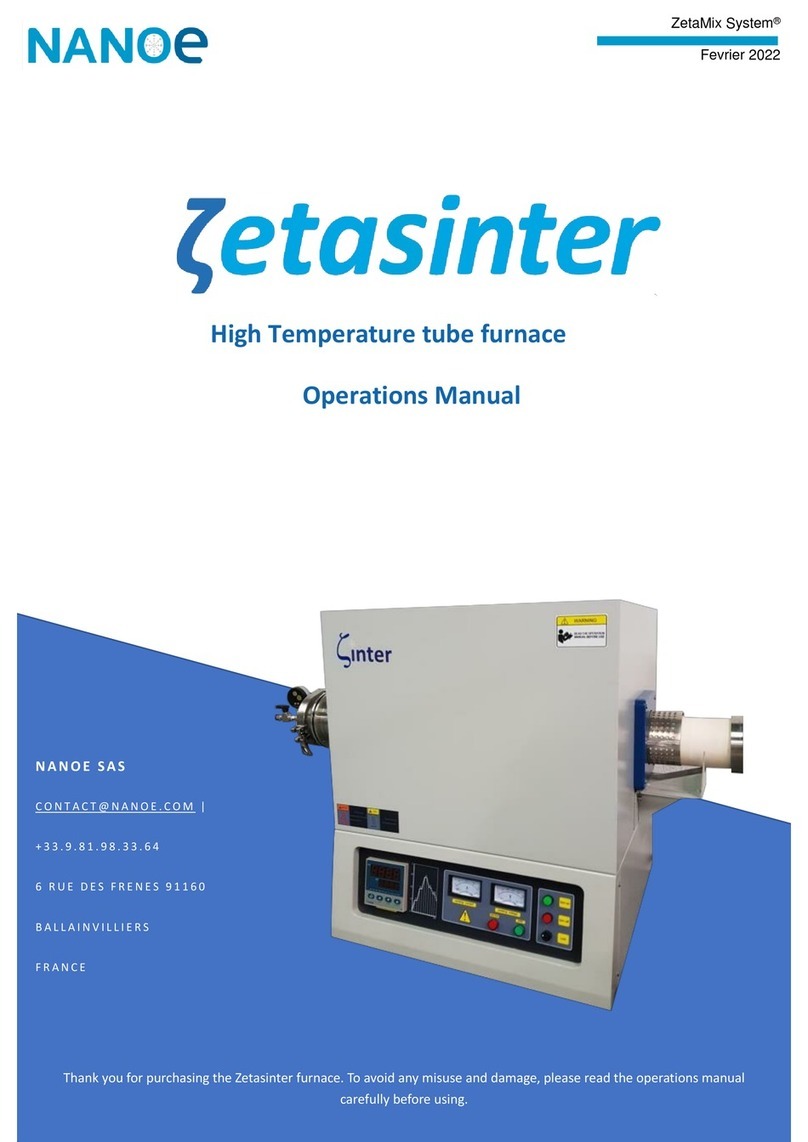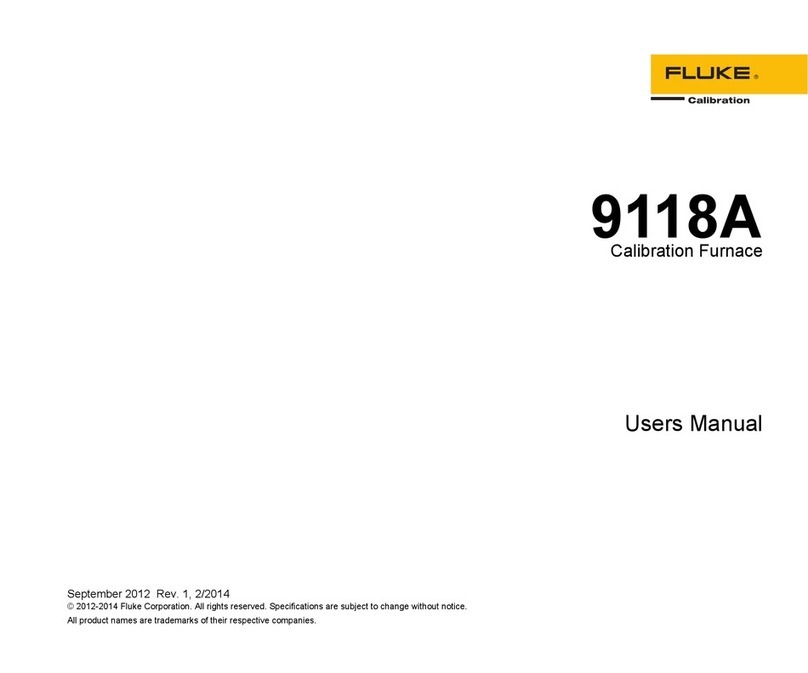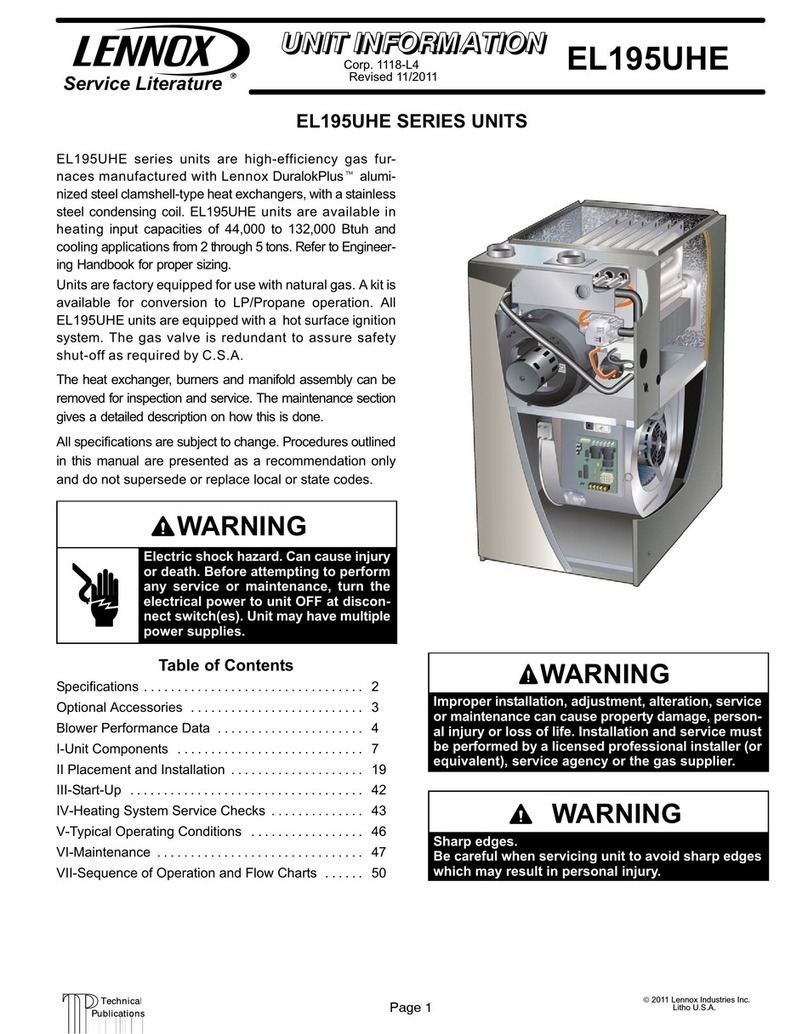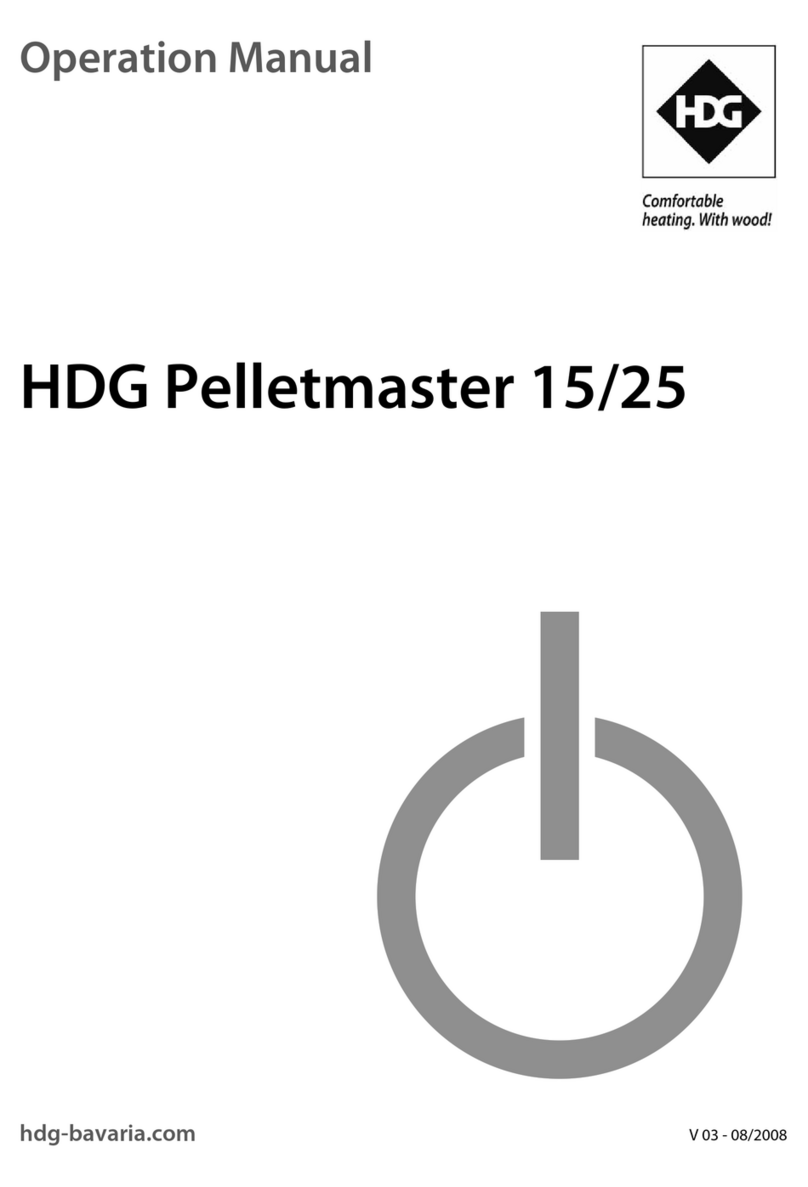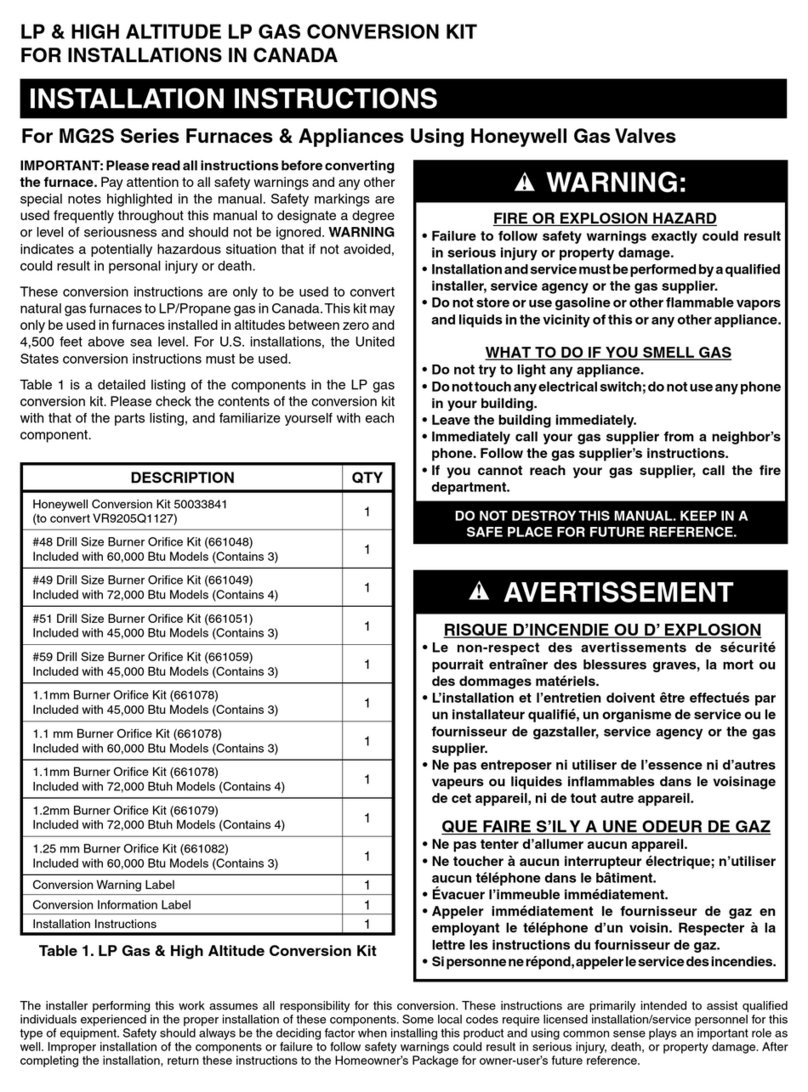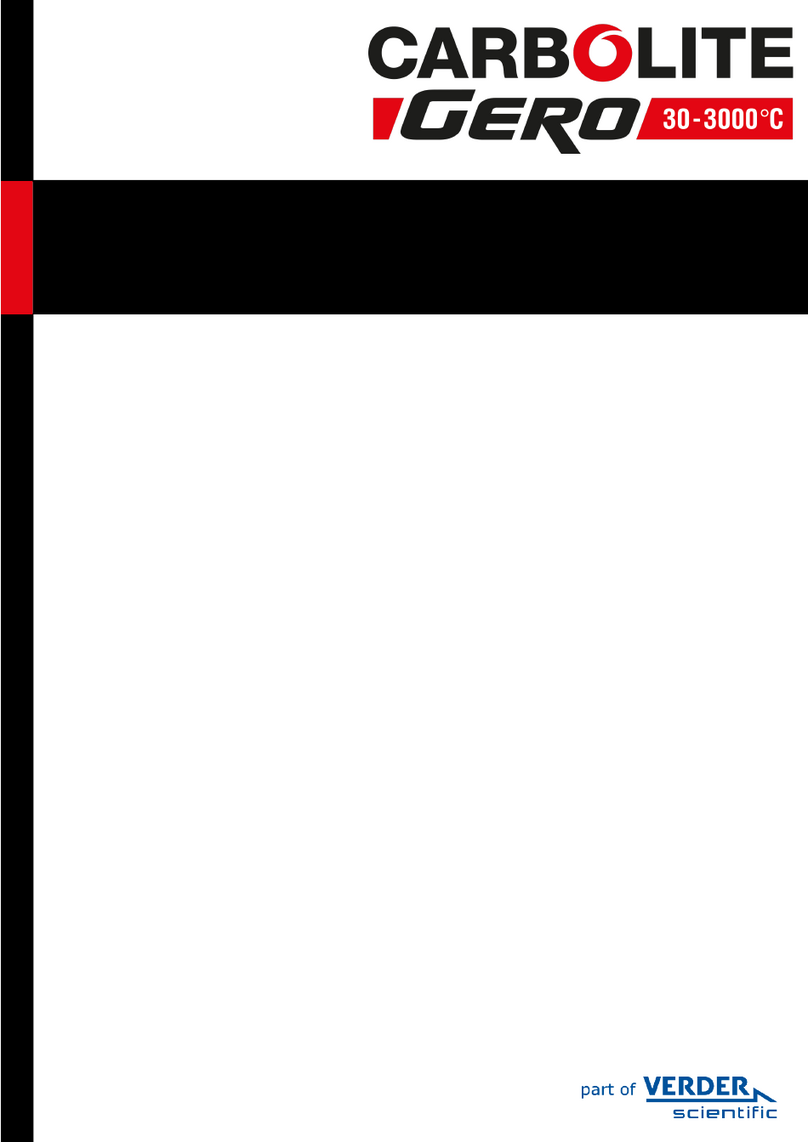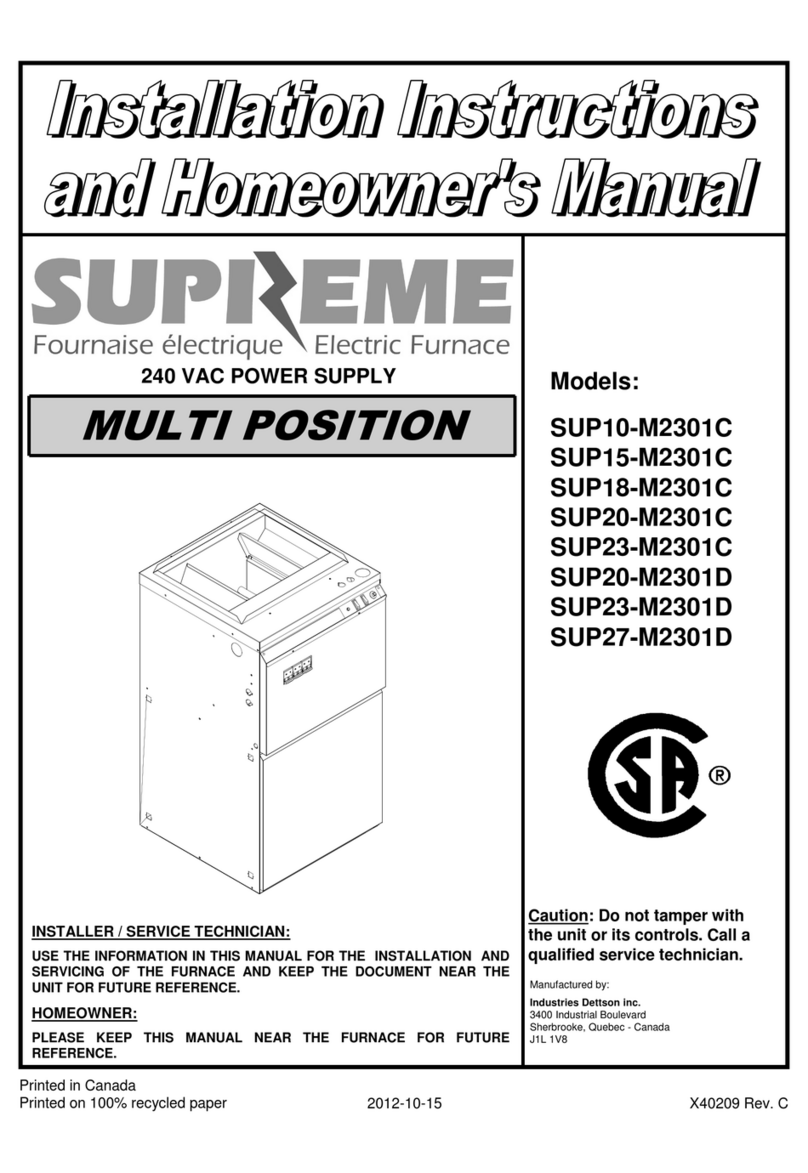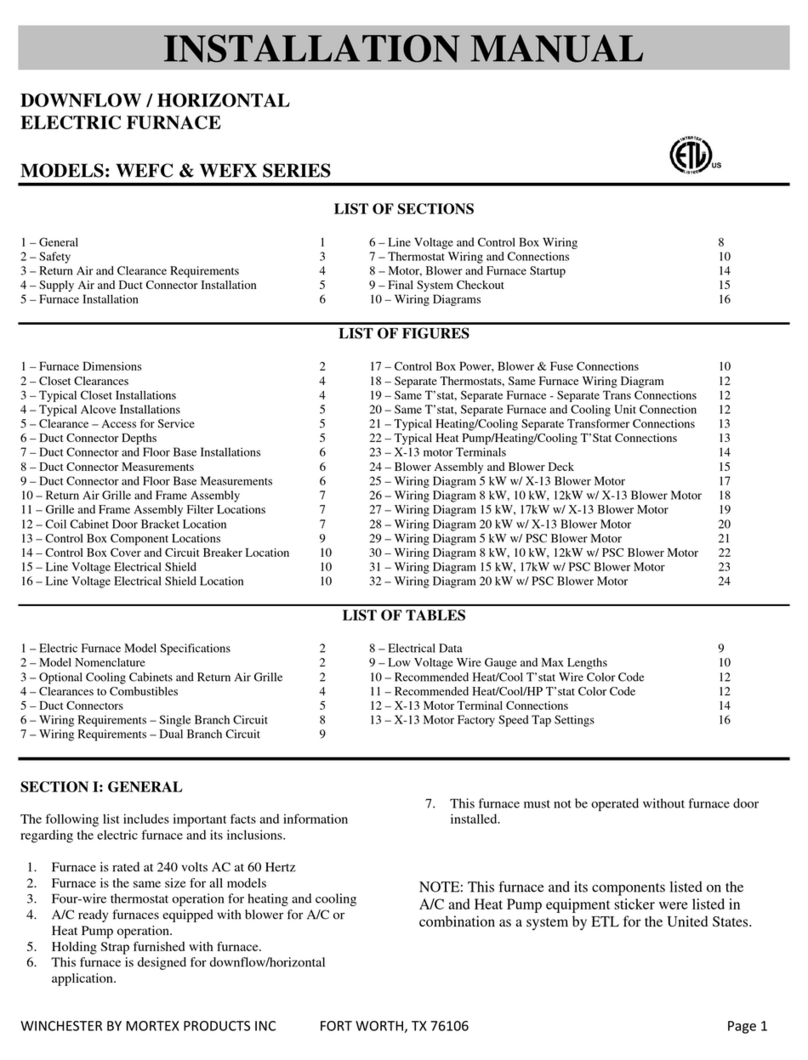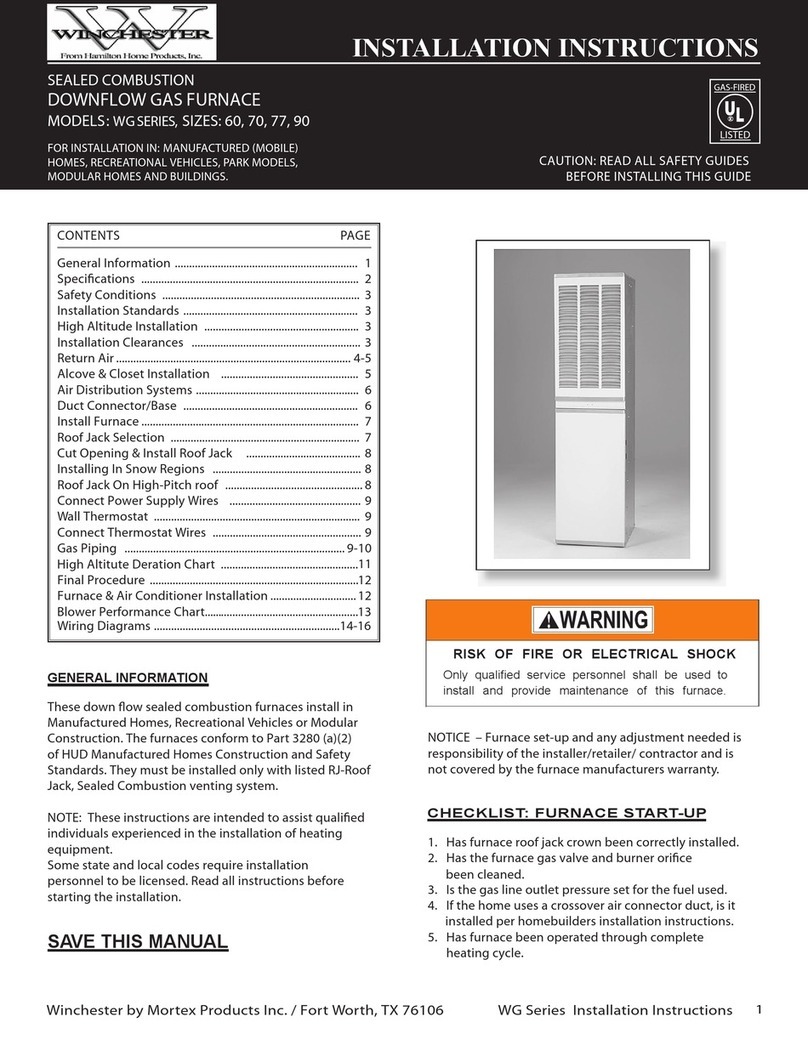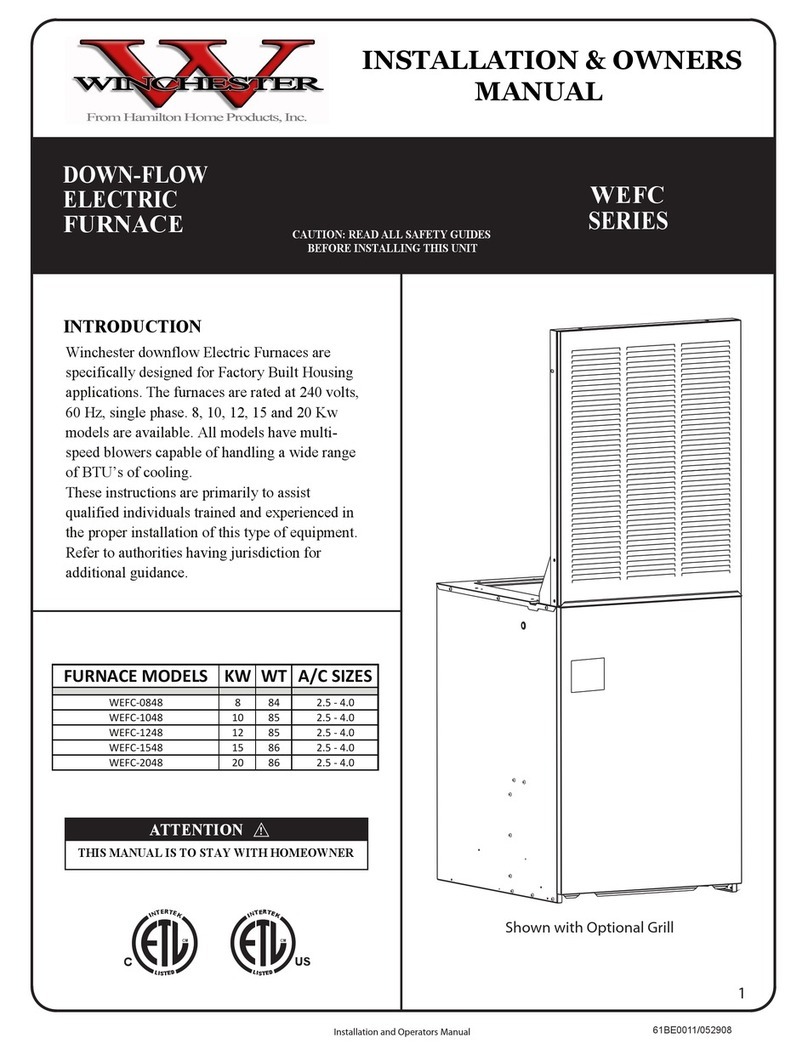
WINCHESTERHamiltonHomeProductsPage2
USERS MUST READ ALL INSTRUCTIONS IN THIS
MANUAL AND THIS MANUAL MUST BE SAVED FOR
FUTURE REFERENCE
SECTION II: SAFETY
This is a safety alert symbol. When you see this symbol
on labels or in manuals; be alert to the potential for personal
injury.
Understand and pay particular attention to the signal words
DANGER, WARNING, or CAUTION.
DANGER: indicates an imminently hazardous situation, which
if not avoided, will result in death or serious injury.
WARNING: indicates a potentially hazardous situation, which if
not avoided, could result in death or serious injury.
CAUTION: indicates a potentially hazardous situation, which if
not avoided, may result in minor or moderate injury. It is also
used to alert against unsafe practices and hazards involving
property damage.
Safety Requirements
1. This electric furnace must be kept clear and free of
combustible materials, gasoline and other flammable
vapors and liquids.
2. Insulating materials may be combustible. The furnace
must be kept free and clear of insulating materials. The
furnace area must be examined when installed in an
insulated space or when insulation is added to be sure that
the insulation material has been kept away from the
furnace.
3. Follow the instructions exactly as shown in Startup and
Shutdown Section in this manual to properly Startup or
Shutdown this appliance.
4. If overheating occurs turn off the power to the furnace
and contact a qualified contractor, installer, or service
agency.
5. NEVER - Store flammable materials of any kind near
your furnace. Gasoline, solvents and other volatile liquids
should be stored only in approved containers outside the
home. These materials vaporize easily and are extremely
dangerous.
6. NEVER – Store cleaning materials such as bleaches,
detergents, powered cleaners, etc. near the furnace. These
chemicals can cause corrosion of the furnace sheet metal
and the electric heaters, the blower and the electrical
controls.
7. NEVER – Use the area around the furnace as a storage
area for items which could block or obstruct the normal
air flow to the furnace or the space around the furnace.
The flow of air is required for safe and proper operation.
Never block or obstruct air openings used for ventilation
and cooling of the furnace electrical components.
8. Refer to the furnace rating plate for the furnace model
number, for the operating specifications for safe
operation.
9. Provide clearances for servicing ensuring service access is
allowed for the control box, electric elements and the
blower.
10.Failure to carefully read and follow all instructions in this
manual can result in malfunction of the furnace, death,
personal injury, and/or property damage.
11.If the furnace is installed in a residential garage it must be
installed so that the electric heaters are located not less
than 18 inches above the floor and the furnace must be
Any adjustment, service or maintenance by the home owner
and/or user may create a condition where the operation of
the product could cause personal injury or property damage.
Only qualified service personnel, a contractor, or an installer
may refer to the service and maintenance section of this
manual for assistance or for additional information on this
appliance.
This product requires periodic routine maintenance and
cleaning of the exterior surfaces by the homeowner or user
to remove dust and debris. Any additional service must be
performed by qualified personnel. This appliance must be
serviced and maintained as specified in these instructions
and/or to any applicable local, state, and national codes
including, but not limited to building, electrical, and
mechanical codes.
FIRE OR ELECTRICAL HAZARD
Failure to follow the safety warnings exactly could result in
serious injury, death, or property damage.
A fire or electrical hazard may result causing property
dama
e,
ersonal in
ur
or loss of life.
Do not use this furnace if any part has been under water. A
flood damaged furnace is extremely dangerous. Attempts
to use the furnace can result in a fire.
A qualified contractor, installer, or service agency must be
contacted to inspect the furnace for any water damage and
replace all components, control system parts, or electrical
parts that have been damaged. If enough damage is
resent
the furnace ma
need to be re
lace
